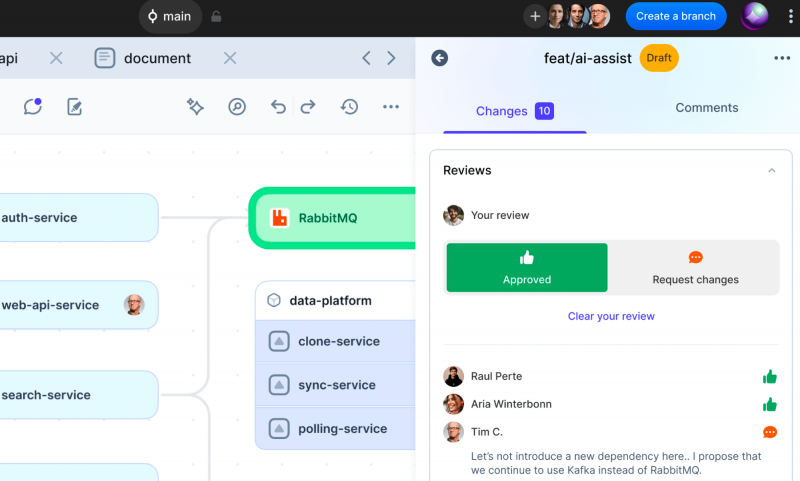 APPS
APPS
 APPS
APPS
 APPS
APPS
Multiplayer Software Inc., the developer of a collaborative tool for the software design of backend systems, announced today the launch of its development software into public beta mode.
Although the company name brings to mind gaming, it’s not quite related. Instead, Multiplayer’s tool gives software developers a way to collaborate when designing scalable backend applications with an intuitive visual interface even when they’re working remotely.
Multiplayer’s platform works to provide a holistic picture of the architecture of an entire project and all of its dependencies, components and requirements across an entire workflow for a team. It does this with visualization, version control, cross-team collaboration and design reviews.
Remote teams suffer from a lot of issues when attempting to build software, especially as software platforms have become ever more complex and lifecycles continue to become tighter with greater requirements for security.
“Backend software platforms are complex and the dev tools available to help manage them were not purpose-built for developers,” said Multiplayer Chief Executive Steph Johnson. “Multiplayer’s beta gives teams the tools they need for real-time visualization, architecture observation, platform version control, design reviews and more. Finally, developers have a better way to collaborate on system design and distributed software.”

Multiplayer’s big features include the ability to share designs, discuss architectural changes, and give feedback at any time before making major changes. System changes can be made in the distributed architecture and rolled back using the collaborative platform and version control across the team allowing the consequences to be visible and socializing the coding solutions for the team. Views can also be designed to fit particular teams for development, architects, quality assurance, management and others to understand their area of expertise.
Developers can also request reviews of new code changes from peers and team members before submitting them to the code. This allows the changes and the subsequent effects on the codebase to be mulled over before they’re committed and discussed before they become a part of the final product.
Everything comes back to a single point of truth in a centralized dashboard where all information is documented and shared. That way any change, discussion or observation by a team member can be referenced and tracked.
This is especially useful for mapping and managing software as a service sprawl, the company said, which the platform also does. Developers can also see everything the team needs to visualize the company’s entire catalog of software and tools including how they interrelate in the backend.
The company said that it’s working on bringing the power of artificial intelligence to help boost team productivity by allowing developers to chat with the system to ask about dependencies, application programming interfaces and architecture issues. It will also provide proactive system reports and optimization recommendations to generate code for designs. The feature is planned for the next quarter.
Support our mission to keep content open and free by engaging with theCUBE community. Join theCUBE’s Alumni Trust Network, where technology leaders connect, share intelligence and create opportunities.
Founded by tech visionaries John Furrier and Dave Vellante, SiliconANGLE Media has built a dynamic ecosystem of industry-leading digital media brands that reach 15+ million elite tech professionals. Our new proprietary theCUBE AI Video Cloud is breaking ground in audience interaction, leveraging theCUBEai.com neural network to help technology companies make data-driven decisions and stay at the forefront of industry conversations.